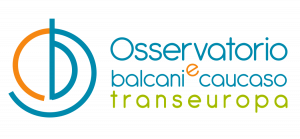A road for the bear. Projects to strengthen ecological corridors
Deforestation, urbanization, and the climate crisis are fragmenting the habitats of large carnivores in Romania and Southeastern Europe. A network of European initiatives is working to protect them, promoting peaceful coexistence as well as biodiversity

A-road-for-the-bear.-Projects-to-strengthen-ecological-corridors
Bears in Romania, Coop4Safe project - © Matei Plesa
Planting fruit trees for bears, removing invasive species from alpine pastures, preserving a silent network of forests connecting the Carpathians to the Mediterranean: these are some of the actions envisaged by a series of European projects (including Interreg Forest Connect , the most ambitious) to strengthen ecological corridors that allow wolves, bears, and lynxes to move freely, avoiding urban areas.
Lost connections
Home to dense forests and rugged rocky expanses, the mountains of Southeastern Europe have for centuries offered refuge to bears, wolves, and lynxes, maintaining favorable conditions even when these animals disappeared from Western Europe. Today, they are home to the largest populations on the continent. While key habitats are largely protected, ecological corridors, which are crucial for feeding and breeding, are not.
Their crisis is caused by urban and infrastructural expansion in key areas, deforestation — often illegal, especially in Romania — and the effects of climate change, which is reducing food resources and fueling increasingly destructive fires. Making matters worse is a rapidly expanding and often unregulated hiking tourism that is invading even the wildest areas of the Carpathians and the Balkans.
"Habitat fragmentation is the key driver of biodiversity loss worldwide, and it is also true here," explains Christian-Remus Papp, national Coordinator for Wildlife and Landscapes, WWF-Romania, pointing to the fir trees looming just beyond the houses of Băile Tușnad , a Hungarian-Romanian village nestled in the Carpathians, at a key point in an ecological corridor where coexistence between human communities and bears has been tested for years through monitoring, technological solutions, and community involvement.
When species can no longer travel to find food, tranquility, or to reproduce, the scholar adds, they end up reduced to isolated and fragile populations, both due to their small numbers and low genetic diversity, which in the long term compromises their response to environmental stress and disease. The balance of ecosystems suffers: fewer carnivores means less stable and functional forests.
Fragmentation, Papp continues, is also one of the main causes of conflict: deprived of alternatives, wolves and bears often end up approaching villages and residential areas in search of waste, beehives, and orchards. Sometimes, attracted by irresponsible behavior — such as giving them food to photograph them — they move ever closer to people and end up becoming accustomed to their presence, with all the risks that this entails. "It’s simple: if we don’t create the conditions for them to find berries and prey in the woods, they will get closer to residential areas," Papp reiterates.
The connectivity map
The need to protect ecological corridors has been recognized for decades, and effective responses have come primarily through international projects, largely within the framework of European projects such as the Interreg and Carpathian Convention programs. Since 2004, initiatives such as Transgreen and Connect Green have mapped the overlaps between "grey infrastructure" and "green areas," producing crucial data and practical tools such as apps for reporting roadkill. The following Save Green initiative has developed an action methodology through discussions with local stakeholders. This resulted in an interactive map of the corridors of the entire Carpathian ecoregion.
The areas favorable to carnivores, marked in green, correspond to the backbone of the mountain range, and the "connecting" zones, more or less narrow, are in yellow. Marked in red, the regions where the critical points are thinner and more frequent. They are concentrated in the central-western part of Romania and in Slovakia, on the border with Hungary and the Czech Republic. One of these nodes, southwest of Brașov, is among the areas with the highest bear density in Europe. It’s no coincidence that here, and in Slovakia, there have been fatal accidents, such as the recent attack on an Italian motorcyclist on the Transfagarasan Road.
Forest Connect: beyond the Carpathians
Launched in 2023 and active until 2026, Forest Connect (part of the Interreg Danube program, with a budget of €2.9 million) expands on the legacy of previous projects with a broader scope: it extends beyond the Carpathians to the Dinaric Alps, involving countries such as Montenegro and Serbia, as well as Ukraine, Bulgaria, Romania, and Slovakia.
Conceptually, Papp believes the novelty is that Forest Connect "also considers climate change scenarios, modeling the future distribution of forests and habitats under three different scenarios, extending up to 2100, according to different climate scenarios and three time horizons: 2050, 2075, and 2100."
Each country, adds Aleksandra Ugarković of WWF Adria, project coordinator, performs different tasks, based on its specific experiences and conditions, but in a coordinated manner. Serbia and Bulgaria, like Romania, are particularly involved in planting saplings in pilot areas on the Stara Planina. In Montenegro, the project is currently tracking two radio-collared bears and has deployed a network of camera traps to track their routes and habits. Ukraine and Slovakia, on the other hand, are important data points for the habitat of lynxes, which are abundant there, unlike in the other project areas.
A digital twin
The project is supported by a robust backbone of scientific studies and technological applications. The most innovative is the "digital twin," a virtual representation of ecological systems, based on real data and predictive models based on artificial intelligence. A “digital twin” developed by Anna Davison (Wageningen University) and Melanie Arp of the Dutch NGO Sensing Clues has already been created in Băile Tușnad. It is part of a series of initiatives promoted by the municipality that, in just a few years, have almost eliminated bear-related damage in the city.
"We call it bear radar. Thanks to data collected with radio collars and camera traps, we’ve built a model capable of identifying at-risk areas in space and time, creating ‘virtual barriers’: when a bear crosses them, the alarm goes off," he explains.
With Forest Connect, that experience expands: data on bear movements are cross-referenced with mapping of obstacles to ecological corridors and future climate scenarios. The goal is to guide protection efforts, including identifying "climate refuges" designed to remain stable over time.
Planting trees, preventing conflicts
With the largest bear population in Europe, Romania is the heart of the project. In addition to the "digital twin," explains Ioana Ismail, the Romanian project manager, the local WWF is conducting pilot interventions in the "bottlenecks" in Maramureș County, near Strâmbu-Băiuț, on the border with Ukraine, and in the Apuseni Mountains in western Romania. "Wild fruit trees have been planted and harmful alien species have been removed. New plants, such as hawthorn, benefit both wildlife and farmers’ flocks."
Transnational projects also require more localized applications. In the historic region of Maramureș, between northern Romania and Ukrainian Transcarpathia, and the Romanian counties of Satu Mare and Suceava, bordering Romania and the easternmost reaches of Slovakia, another Interreg project, Coop4Safe , is underway. Unlike Forest Connect, it is more focused on local relationships and conflict reduction, while maintaining ecological connectivity at the heart of its activities. With a budget of €832,000 and the collaboration of associations and protected area administrations involved in the three countries, the project aims to develop a biodiversity monitoring system, promote nature-based solutions, and activate shared pathways to engage local communities.
"The project is structured on three levels," explains Alexandra Verdes of WWF Romania, project manager. "First, we want to develop a data collection and monitoring system, both for assessing biodiversity and human-wildlife conflicts. Based on this, we want to promote nature-based solutions for habitat restoration and ecological connectivity. Finally, we want to develop tools for conflict prevention, including outreach and citizen science activities, with apps that allow citizens to contribute to monitoring. This is all part of a "cross-border cooperation between interested organizations in the border region of Slovakia, Romania, and Ukraine."
“In Romania,” adds Alexandra Sallay-Mosoi, technical lead of the bear initiative in Băile Tușnad, who has been following the conversation and providing scientific and technical insights, “the political climate at the national level is no longer favorable to coexistence , but acceptance remains strong in urban areas and certain rural areas involved in the project”. However, no one among the project promoters is certain that this will always be the case. "Conflicts will always exist to some extent; we must learn to manage them," comments Ugarković. "Remembering that they are almost always due to problems caused by us humans, including habitat fragmentation. And therefore it’s up to us to solve them."
This article is published in the context of the project "Cohesion4Climate" co-funded by the European Union. The EU is in no way responsible for the information or views expressed within the framework of the project; the sole responsibility for the content lies with OBCT.
Tag: Cohesion for Climate










